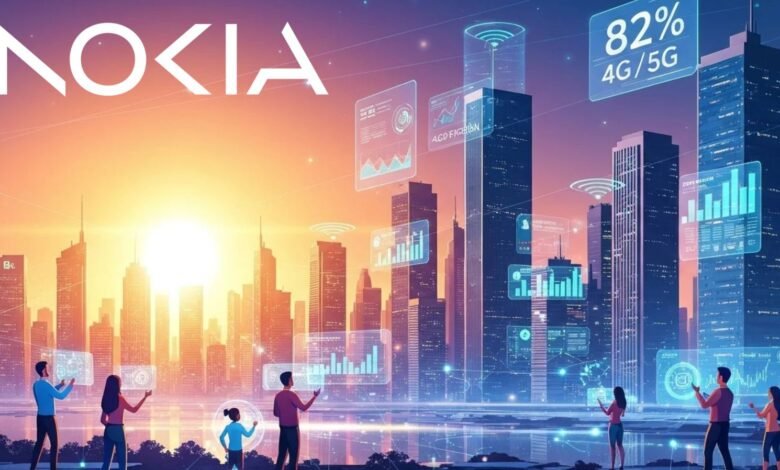Nokia: 82% of MEA Mobile Users on 4G/5G by 2030

▼ Summary
– By 2030, 82% of mobile connections in the Middle East and Africa will be on 4G and 5G networks, accelerating the region’s digital transformation.
– 5G subscriptions in MEA are projected to reach 605 million by 2030, accounting for 53% of total mobile data traffic and driving innovation and economic growth.
– The Gulf Cooperation Council will lead with 91% of mobile subscriptions on 5G, the highest penetration rate in the MEA region.
– 5G Fixed Wireless Access market share is forecast to more than double from 15% in 2023 to 35% by 2030, offering faster deployment and lower costs than fiber.
– Investments in 5G will enable IoT, smart cities, and enterprise solutions, integrating with AI and edge computing to optimize operations and improve productivity.
A new industry forecast reveals that by the year 2030, a remarkable 82% of all mobile connections across the Middle East and Africa will operate on 4G and 5G networks. This significant shift, detailed in the Nokia Mobile Broadband Index Report 2025, highlights the region’s rapid move toward high-speed, data-driven connectivity and its broader digital evolution.
The study identifies 5G technology as a primary catalyst for regional innovation. It is expected to enable the development of smart cities, power sophisticated enterprise solutions, and stimulate substantial economic growth. Projections indicate that 5G subscriptions will surge to 605 million throughout the MEA region by the end of the decade. These next-generation connections are anticipated to account for more than half of all mobile data traffic.
Leading this technological transformation will be the Gulf Cooperation Council (GCC) nations. The report forecasts that an impressive 91% of mobile subscriptions in the GCC will be on 5G networks, representing the highest penetration rate in the entire MEA area.
One of the standout trends is the explosive growth of 5G Fixed Wireless Access (FWA). Its market share is predicted to more than double, rising from 15% in 2023 to 35% by 2030. This surge underscores a major regional pivot toward advanced wireless broadband, which offers faster deployment times and lower infrastructure costs compared to traditional fiber-optic installations.
The momentum behind FWA is largely driven by the increasing maturity of 5G networks. These networks now deliver reliable, high-speed internet to homes and businesses, particularly in areas where the availability of wired broadband remains limited or underdeveloped.
Mikko Lavanti, Senior Vice President of Mobile Networks for MEA at Nokia, stressed that strategic 5G investments are unlocking transformative potential for consumers and industries alike. He noted that operators across the region are making significant commitments to 5G technology, which will act as the core engine for enabling the Internet of Things (IoT), smart city infrastructure, and enterprise-grade solutions. These technological advancements are expected to power a wide array of applications, from autonomous transport systems and smart agricultural practices to advanced healthcare services utilizing real-time data analytics.
Lavanti further explained that the convergence of 5G with artificial intelligence and edge computing will empower industries to streamline their operations, boost productivity, and create entirely new digital experiences. This synergy is laying the groundwork for a more interconnected and intelligent economic landscape.
Looking ahead, as smartphones become increasingly affordable and regional governments actively promote their digital transformation agendas, the report positions 4G and 5G as the dominant connectivity framework for the MEA region. These findings confirm the area’s growing preparedness for IoT, Industry 4.0, and next-generation enterprise applications, firmly establishing widespread broadband access as a fundamental pillar of sustainable development and economic diversification.
(Source: MEA Tech Watch)





